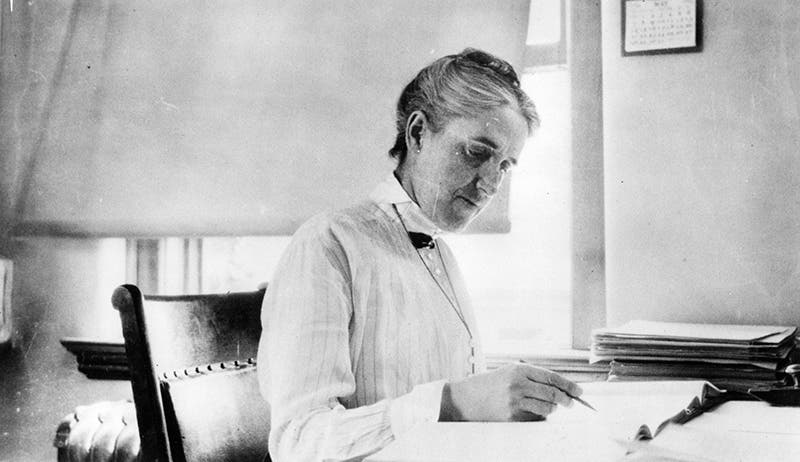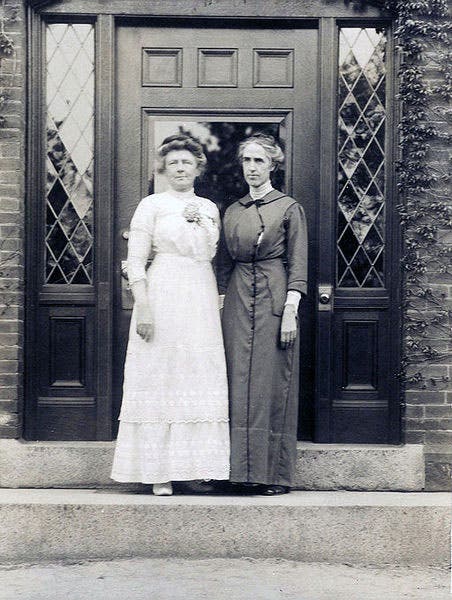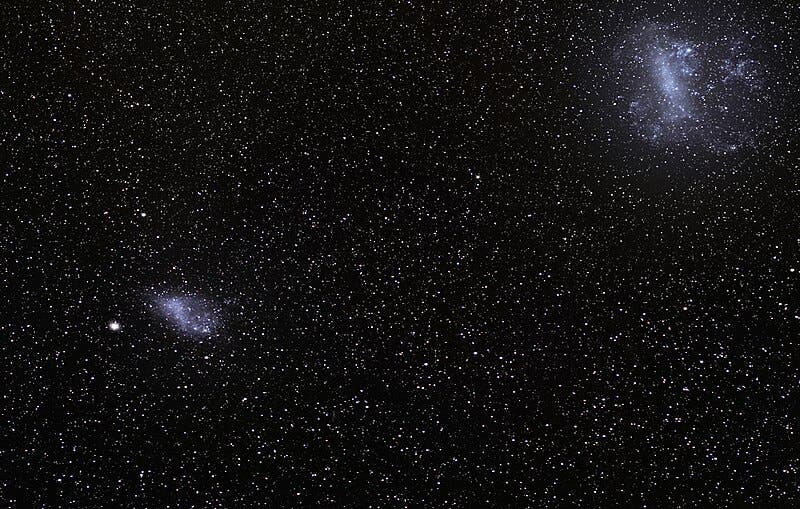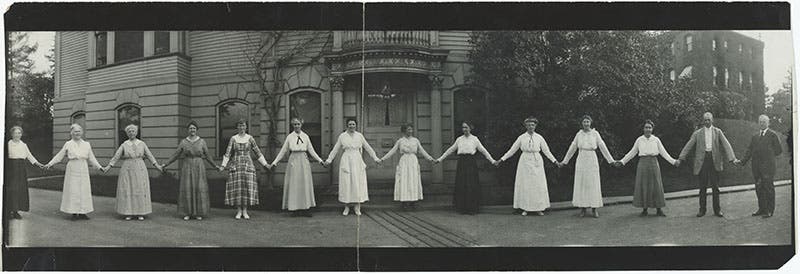Scientist of the Day - Henrietta Swan Leavitt
Henrietta Swan Leavitt, an American astronomer, died Dec. 12, 1921, at the age of 53. She attended Oberlin College for 2 years, completing her degree in Cambridge, Mass., at what would become Radcliffe College. In 1895, she joined the staff of Harvard College Observatory, becoming one of the Harvard "computers" hired by the director, Edward Pickering, to measure the brightness and spectra of stars. We have published posts about some of these computers, many of whom became quite well-known and respected by the astronomical community: Williamina Fleming, Antonia Maury, and Annie Jump Cannon.
Leavitt joined the observatory staff just one year before Cannon, and the two became close friends and colleagues. Oddly, both suffered from hearing loss, Cannon since an attack of scarlet fever, and Leavitt progressively, while she was at Harvard. They communicated in other ways (second image).
From her first days at Harvard, Leavitt worked at a light table with photographic plates, not at a telescope. It is often said that the women at Harvard were not allowed to use any of the telescopes, but that is not true – Miss Cannon worked with a telescope from the beginning. But Leavitt labored over the many thousands of glass plates that Harvard already had in their collections. She initially was assigned to record the magnitudes of stars near Polaris, in order to establish standard magnitudes.
Leavitt left Harvard in 1898 to travel, and then returned in 1903, where, for the first time she earned a wage of 30 cents an hour – Pickering was happy to have her back. Now she was assigned to look at plates of southern stars taken at Harvard’s southern observatory in Peru, in order to identify variable stars. In particular, she studied two distant collections of stars that were known, after their discoverer, as the Small and Large Magellanic Clouds (SMC and LMC), which we now know to be distant irregular galaxies of millions of stars each, associated with, but not part of, the Milky Way Galaxy. We show a modern photo of both the SMC and the LMC as they appear to the naked eye in the southern skies (third image).
Variable stars are stars that change their magnitude in a regular fashion, over periods of days and weeks (the short-period variables) or months and years (the long-period variables). These periods are worked out by estimating magnitudes on a whole series of photographic plates. It is tedious work, requiring a discriminating eye and lots of experience. Leavitt began to notice something quite unexpected at the time – a correlation between the periods of the variables she was identifying, and their relative luminosity or magnitude. A star with a period of one week would have a greater magnitude than one with a period of 3 days, and a smaller magnitude than one with a period of two weeks. No one had noticed this before, because no one was working with a collection of variables that were all about the same distance from us, thus taking their absolute distance out of the equation. The correlation was only exhibited by the short-period variables, which were known as “Cepheid variables”, after the first one discovered a century before, in the constellation Cepheus.
Leavitt made a preliminary announcement of her discovery in 1908, and then spent three more years gathering further evidence before publishing her most important paper in 1912 (fourth and fifth images). By that time, she had discovered and measured the periods and relative magnitudes of over 900 variable stars in the SMC, and 800 in the LMC, quite a substantial dataset. The final correlation remained simple: the greater the magnitude of a Cepheid variable, the longer its period. The paper, incidentally, was published under Pickering’s name, although he gave Leavitt full credit in the first paragraph. The status of women in astronomy was improving greatly, especially at Harvard, but it still had a ways to go.
The significance of Leavitt’s discovery of what came to be called the Period-Luminosity law for Cepheid variables was not lost on Pickering, nor on any of the important astronomers of the time, such as Ejnar Hertzsprung and Henry Norris Russell. The Period-Luminosity law provided the first new astronomical yardstick since the first measurement of stellar parallax in 1838. Once the new yardstick was calibrated (you needed to know the absolute distance to at least one Cepheid variable star), you could now determine the absolute brightness of a Cepheid variable by measuring its period, and then calculate its distance by measuring its apparent brightness. It was as simple as that. Since measuring parallax was only possible for nearby stars, the Period-Luminosity law, which could be used on any Cepheid variable star in the Galaxy (and even for stars in other galaxies, as Edwin Hubble would discover in 1923), allowed one, for the first time, to determine galactic distances.

Graph (right) showing the linear relationship between luminosity and period for Cepheid variables in the SMG, “Periods of 25 variables in the Small Magellanic Cloud,” by Henrietta Swan Leavitt, under the byline of Edward Pickering, Harvard College Observatory Circular no. 173, 1912 (Linda Hall Library)
Six years later, Harlow Shapely showed the usefulness of Leavitt's Period-Luminosity law by measuring the distance to the globular clusters that surround our Galaxy, and thus the size of the Galaxy itself. And, as we mentioned, Edwin Hubble would use Leavitt‘s law to confirm that the Andromeda nebula is in fact an external galaxy, and to measure its distance in 1923. Leavitt certainly earned the respect of her contemporary male astronomers, especially Hertzsprung, who wanted to nominate Leavitt for the Nobel Prize, but since she had no surviving family and left no letters or papers, she did not achieve the fame she deserved after her premature death of cancer in 1921, before she could even be considered for a Nobel award. Fortunately, we do have some contemporary photographs of Leavitt, preserved in the Harvard archives, that allow us glimpses of one of the most significant of the early woman astronomers. Although Leavitt is only one of many in the last photograph, the so-called “paper-doll” photo of all the women computers at Harvard in 1918, I include it because it is such a delightful panorama, and we have never used it before. Leavitt is just left of center, with a loop of dark ribbon on the front of her blouse (sixth image).
For a richer picture of Leavitt’s place in the Harvard College Observatory environment, I highly recommend The Glass Universe, by Dava Sobel (Viking Pess, 2016)
William B. Ashworth, Jr., Consultant for the History of Science, Linda Hall Library and Associate Professor emeritus, Department of History, University of Missouri-Kansas City. Comments or corrections are welcome; please direct to ashworthw@umkc.edu.











